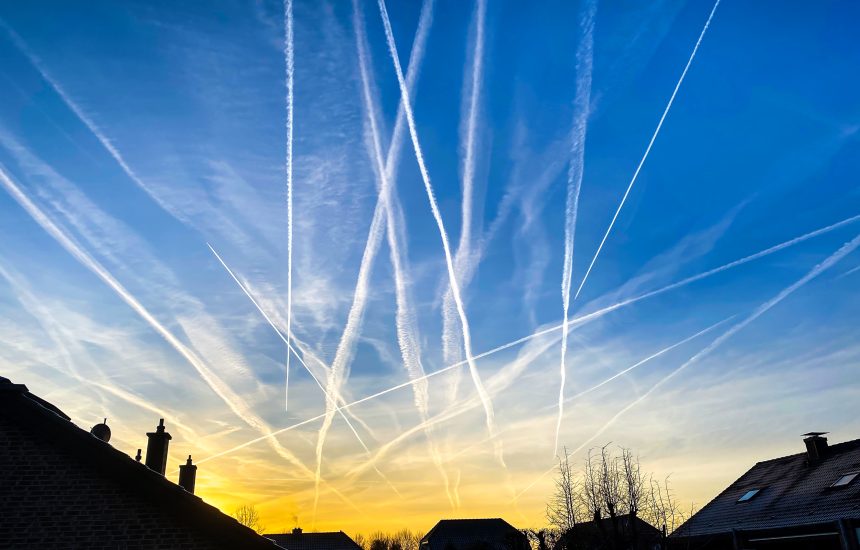The chemtrails narrative, a prominent fixture in the world of conspiracy theories, continues to ignite a wide range of discussions across various platforms. Central to this theory is the assertion that the contrails, or the streaks of condensation left by airplanes, are in fact deliberate discharges of chemical or biological agents for purposes that remain undisclosed, stirring controversies around public health, environmental interference, and hidden governmental agendas.
Decoding Chemtrails
Contrails, or condensation trails, manifest as the visible streaks trailing airplanes, primarily at high altitudes. These form when the moist, hot air from the jet’s exhaust merges with the colder, less humid atmospheric air, leading to the condensation and subsequent freezing of water vapor into ice crystals, creating visible clouds.
However, advocates of the chemtrails theory hold that certain contrails, which linger longer than what is typical, could be laden with additional, undisclosed substances. The speculated objectives behind these alleged chemtrail discharges range from atmospheric and weather modification to more ominous goals like population control and psychological warfare.
The Verdict from Science and Government
The consensus within the scientific community firmly acknowledges that persistent contrails are a conventional byproduct of aviation, shaped by specific atmospheric conditions that can cause these trails to linger and evolve into cirrus clouds.
In response to the swirling theories, governmental bodies have consistently negated the existence of any such chemtrail programs. Official responses to inquiries have categorically dismissed these theories, yet the speculation continues to thrive, fueled by a pervasive distrust in official narratives and scientific authorities.
Environmental and Public Health Dimensions
While the chemtrail conspiracy is broadly debunked, the discourse it generates brings to light valid concerns about the ecological and health ramifications of aviation. The environmental footprint of air travel, marked by carbon emissions and contrail formations, does contribute to climate dynamics. The chemtrail debate occasionally shifts focus away from these legitimate issues, thereby overshadowing productive discussions on the environmental sustainability of aviation.
Digital Echo Chambers
The rampant spread of the chemtrail theory can be significantly credited to the digital era, with online forums and social media acting as catalysts. These platforms enable the formation of communities united by shared beliefs, often amplifying the theory through an echo chamber effect, where only conforming viewpoints are circulated, further entrenching these beliefs despite a lack of empirical evidence.
Reflecting on the Broader Implications
The persistence of the chemtrail theory embodies a complex interplay of skepticism, misinformation, and genuine environmental concerns, reflecting a broader societal challenge in discerning truth from fallacy. The enduring nature of this conspiracy underscores the imperative for clear, accessible scientific discourse and underscores the critical need for critical thinking skills in navigating the misinformation landscape prevalent in the digital age.








